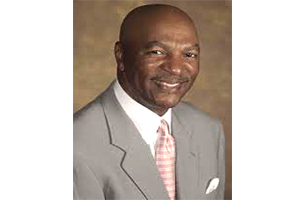When destiny intersects with history, the result can be enlightening if not transformational. So it was this past week in North Carolina’s Triad, a three-hour drive from my birthplace in the Blue Ridge Mountains.
 Coming home again never was more entertaining or nerve wracking. That’s because Tiger Woods was in contention for a much-needed win at the Wyndham Championship. There was also a berth in the FedEx Cup playoffs on the line for the former world No. 1 in the regular-season-ending event.
Coming home again never was more entertaining or nerve wracking. That’s because Tiger Woods was in contention for a much-needed win at the Wyndham Championship. There was also a berth in the FedEx Cup playoffs on the line for the former world No. 1 in the regular-season-ending event.
That he failed to end a two-year victory drought and stymie talk of his demise (for the moment) is only part of the story. Just as important is the historical significance of the site where he sought to capture career-win No. 80—Greensboro’s Sedgefield Country Club.
Fifty-four years ago another man of African American descent entered the PGA Tour event in Greensboro. Like me, Charlie Sifford was a native Tar Heel having cut his golfing teeth as a caddie in Charlotte. He was also the first black man to receive a PGA Tour card, which made him eligible to compete in the Greensboro tournament.
In 1961, black faces were part of the scenery at private clubs in the South and much of the rest of the country for that matter. In starched uniforms, we dominated the service staff. And very few golf bags were carried by anyone else. So news that a black man was going to tee it up with white professionals at Sedgefield shocked and angered golf fans of southern gentility from Maryland to Mississippi.
The backlash was immediate. Sifford received death threats as soon as he pulled into town. Hoteliers shunned him. Most restaurants didn’t allow blacks either. Sifford found refuge among his own people. A local black college provided room and board. Locals not only fed his body but his spirit. And man, did he need the nourishment.
In his autobiography “Just Let Me Play,’’ Sifford details the harassment by fans, who rained down on him insults and racist remarks. Every time his tee shot wandered in the direction of the rough the ball found a nearly unplayable lie. Coincidence? Perhaps. Sifford and his supporters didn’t believe so.
Undaunted by the harsh treatment, Sifford remarkably finished in a tie for fourth place. In so doing, he demonstrated mental toughness, true grit and talent while proving that a black man could compete against the world’s best if given an opportunity. A plaque commemorating his brave accomplishment is displayed on the wall of champions at Sedgefield.
Fast forward 5½ decades and we bear witness to the vagaries of time and circumstance. Greensboro rolled out the red carpet for Sifford’s adopted grandson, Tiger Woods, making his first appearance in the Wyndham an unforgettable experience.
The gushing began the moment Tiger committed to the tournament. Officials had to print an additional 49,000 tickets to accommodate the anticipated crush. The massive galleries followed him from the parking lot to the 18th green each round, paying scant attention to anyone else including local favorites Webb Simpson, Bill Haas and eventual champion Davis Love III. For the record, Love’s one-stroke victory was his third in the event and, at 51 years old, distinguished him as the third-oldest winner in tour history.
As for Tiger, his season ended on a promising note, despite a crippling triple bogey on the 11th hole that exposed a persistent weakness in a once-stellar short game. He managed to birdie four of the final six holes as a sign of his enduring will but it was too little too late. Tiger’s early off-season should include some reassessment of where he is and where he’s headed.
As for Greensboro 2015, in the old Woolworth building—the same one made infamous when a group of students held a sit-in at the lunch counter during the civil rights movement–resides a museum that highlights the history of African Americans. From native North Carolina civil rights leaders to Dr. Martin Luther King Jr. to President Barack Obama, it is a narrative of change hoped and prayed for and, in some ways, realized.
There is no mention of Charlie Sifford’s inhumane treatment by the uncivilized golf patrons back in 1961. Nor is there any mention of the “Greensboro Six,’’ barrier breakers in their own right in the fight to desegregate golf courses in the city. Tiger’s grand reception probably won’t make the cut either. However, when history does embrace positive change instead of rejecting it, the world is a much better place.
 ABOUT PETE McDANIEL Pete McDaniel is a veteran golf writer and best-selling author. Contact him via Email. His blogs and books are available at petemcdaniel.com
ABOUT PETE McDANIEL Pete McDaniel is a veteran golf writer and best-selling author. Contact him via Email. His blogs and books are available at petemcdaniel.com


